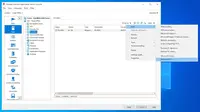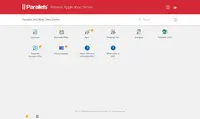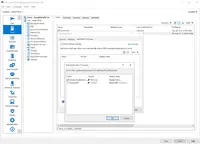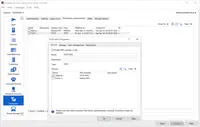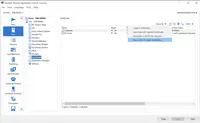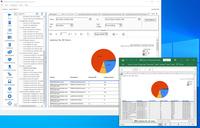Overview
What is Parallels RAS?
Parallels Remote Application Server (Parallels RAS, formerly 2X RAS), is application virtualization technology, billed as a solution to extend the life of legacy OS (like Windows XP) with its virtual desktop for any device. Maltese company 2X Software developed the technology,…
Awards
Products that are considered exceptional by their customers based on a variety of criteria win TrustRadius awards. Learn more about the types of TrustRadius awards to make the best purchase decision. More about TrustRadius Awards
Reviewer Pros & Cons
Pricing
Entry-level set up fee?
- No setup fee
Offerings
- Free Trial
- Free/Freemium Version
- Premium Consulting/Integration Services
Starting price (does not include set up fee)
- $120 per year per user
Product Details
- About
- Integrations
- Competitors
- Tech Details
- Downloadables
- FAQs
What is Parallels RAS?
Parallels® Remote Application Server (RAS) is a remote work solution that provides secure virtual access to business applications and desktops on any device or OS—from anywhere. The platform offers an agile, cloud-ready foundation and end-to-end security fueled by a centralized management console with granular policies. Companies can leverage on-premises, hybrid, or public cloud deployments and integrate with existing technology like Microsoft Azure and AWS. Parallels RAS aims to give organizations the flexibility, scalability, and IT agility to adapt to changing business needs. Parallels RAS offers a single, full-featured licensing model that includes 24/7 support and access to product training. The vendor states its key benefits include:
- User experience—work from anywhere, on any device.
- Enhanced data security and compliance—centralized management console with granular policies.
- IT agility and business readiness—flexible hosting solutions to scale and adapt.
- Total cost of ownership—supports BYOD and includes a simple licensing model.
- Always-on support—access to 24/7 support and training at no additional cost.
Parallels RAS Features
- Supported: Advanced access controls: Secures corporate data with a client group policy in the Parallels RAS Console. Centrally manages and controls access by user, group, or device.
- Supported: Multifactor authentication: Requires users to authentication access via two-factor or smart card authentication. Parallels RAS also integrates with third-party security solutions.
- Supported: Encryption protocols: Parallels RAS Secure Gateway supports SSL and FIPS 140-2 encryption, helping organizations adhere to data compliance policies such as PCI DSS, HIPAA, and GDPR.
- Supported: Centralized monitoring: Transforms raw data into custom visual reports to show traffic and resource usage from network infrastructure. Centrally monitors day-to-day user activities.
Parallels RAS Screenshots
Parallels RAS Videos
Parallels RAS Integrations
Parallels RAS Competitors
Parallels RAS Technical Details
| Deployment Types | On-premise, Software as a Service (SaaS), Cloud, or Web-Based |
|---|---|
| Operating Systems | Windows, Linux, Mac, Windows Server 2008R2, 2012/R2, 2016, 2022, Windows 7, 8/8.1, 10, 11 |
| Mobile Application | Android, Mobile Web, iPadOS |
| Supported Languages | English, German, Japanese, Russian, French, Spanish, Italian, Portuguese, Simplified Chinese, Traditional Chinese, Korean |

